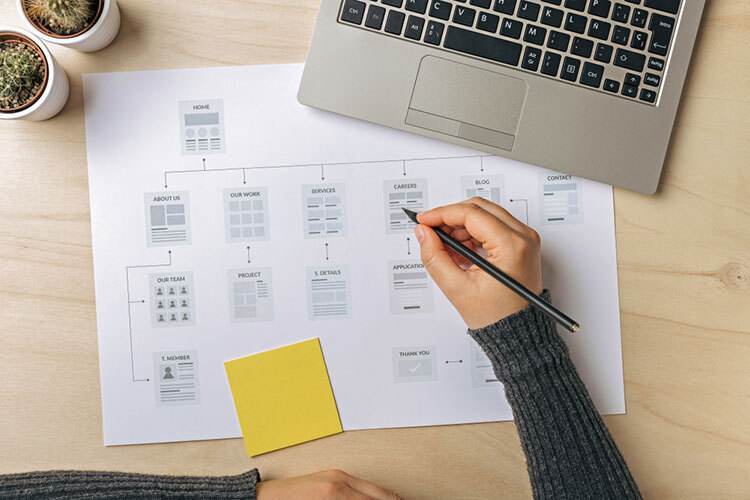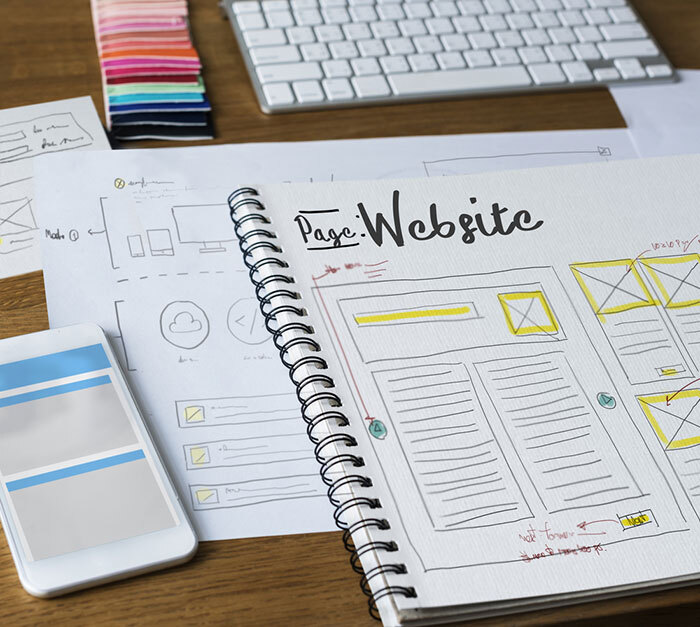If you have been in the marketing game for a while now, you know that content is king. With so much competition in today’s online space, having high-quality and valuable content can set your website apart from others. However, if you are new and still starting, you first need to think about how you should build your site.
When creating a website, you can either write the content first before designing it or do the opposite. Strictly speaking, there is no hard rule as to what the right approach is. However, many experts recommend starting with content for various reasons.
Why Create Content Before Design?
The simplest way to explain why content should come before the design is this—design trends will constantly change and evolve, but your content will always be anchored to your user’s needs.
Regardless of your branding, the content will serve as your site’s foundation. Without this, even the most visually appealing web design will not be enough to convince users to support your brand or purchase from you. Check out the key reasons below to understand why building your content first makes sense.
Content Builds Your Site’s Blueprint
It may sound redundant by now, but the reality remains that content is king. With so many websites existing today, the content will be one of the most significant factors differentiating your site from another. Thus, it guides you in creating the blueprint for your overall site.
In short, content is the primary building material that helps bring your site together and ensure harmony. All other elements, including the design, merely play a secondary role in enhancing your content’s value. If you do not have high-quality content, to begin with, the design will not be enough to push visitors to convert into customers.

Content Keeps Your Focus in the Right Place
If you do your site design first, the common risk is getting caught up with all the options and trends. Once you start looking through website themes, you quickly get carried away with the visuals and base your decision solely on what looks best. While there is nothing wrong with a well-designed website, the problem is adjusting your content to fit how your site looks.
For example, if you bought a stock theme for your site, you need to write your content to fit the template’s layout. In many cases, this would mean sacrificing the quality, structure, and optimization of your content to match your chosen design.
Content Aids in Deciding Your Design
Writing your content first allows you to make more informed and educated decisions about your site design. While the design is undoubtedly vital in attracting site traffic, you also need to think of the best way to highlight your site and make it stand out. To do this, you should plan out how to introduce your company and showcase your products and services before impulsively selecting a design.
Essentially, adopting a content-first approach allows you to first consider your site’s objectives and map out the steps to achieve that purpose. Business owners often choose a design based on what looks best in their eyes, but it may not always align with their objectives.
On the contrary, developing content first will force you to consider your overall goals since you need to consider your target audience and subject matter. It entails developing your buyer personas and researching beforehand to know what pain points you are solving for your audience.

Best Practices for Developing Your Website Content
Now that you see the value of creating your content before web design, here are some top practices you can use. If you already have an established site, consider doing an overall checkup to see how it performs and whether you need to change your content and design.
Understand Your Audience
One of the most important aspects of content creation is understanding your audience. Strong content should be built around the reader, so you should know their needs to write effectively and communicate your brand’s appeal to them. Make sure to research to learn more about user intent, which can help you create more relevant and optimized content.
Once you understand your audience’s behavior, interests, and motivations, you can determine the right tone and language. You can also get ideas on what topics you should write about to hook your audience. Remember that content can make or break their decision to purchase from you, so you need to know them well to deliver the information they are seeking.
Identify the Relevant Keywords
Using the right keywords in your content is essential to ensure that your target audience can find your site when they search online. Whether you are doing a website rehaul or building one from scratch, you need to optimize your content at all times.
So, before you write anything, make sure you do your keyword research properly. To start, compile a list of topics related to your business or expertise, then use these as a guide to finding search terms. Ideally, you want to choose keywords with a high search volume but low competition.
If you operate in a competitive industry, consider exploring long-tail keywords. These tend to have lower search volumes since they are more specific, but they also come with less competition. Likewise, long-tail keywords allow you to focus your content towards a more targeted audience and adopt a more conversational tone to appeal to voice searches, making up 20% of searches in the Google App.
Focus on the Right Content
While writing your content before making the design is more beneficial and time-efficient, this does not mean you need to have all your content ready right away. The most important thing would be to focus on crucial sections in your site, then the rest can follow. Generally, here are the pages you should get done before you start with your web design:
Use High-Quality Images
Images significantly help in make your content more engaging, eye-catching, and memorable to users. For example, long text passages can look draggy, discouraging users from reading what you have to say. By injecting photos in different areas, you can convey your messages more efficiently and keep them interested in your content.
Similarly, images can boost your SEO efforts by increasing site engagement and accessibility. Just make sure you use the proper format, depending on what platform you use, and compress them to maintain fast loading times.
Structure Your Content Properly
Organizing and structuring your content is essential to promote readability, especially with long-form content. To do this, you should use headings and subheadings to separate critical sections in your article and help readers understand your main points. Make sure you also apply the correct tag hierarchy for your headers, specifically H1 for titles, H2 for subheadings, and so on.
Create and Follow Your Timeline
When designing a website, you need to coordinate the timeline with all the relevant stakeholders to ensure a smooth flow. One way to plan this out is by starting from your intended launch date. From here, work backward and see how much time you have for all the necessary deliverables, including content creation.
You can organize your timeline any way you see fit, as long as it is easy to understand, and you allow enough time to get everything done. Of course, you should also maintain transparency and accountability in the team to ensure that everyone is up to date with the project’s progress. For example, if the content is not submitted on time, this will also affect the progress of the design. Thus, delays should be communicated early on.
Proofread Your Content
It may seem minor, but never forget to proofread all your content before publishing it on your site. You want to make sure the content flows smoothly, is easy to read and understand, and ultimately provides value. Of course, you should also check for typographical and grammatical errors that can be off-putting to readers.
Monitor Your Site Post-Launch
Content creation does not end after launching your site. While you have the foundation and main design laid out at this point, there is always room for improvement. By monitoring your site’s key performance indicators (KPIs), you can identify opportunities to add or fix your content.
Remember that marketing is an ongoing practice, so you should always check your site to ensure that your strategies are working well for you. If not, you can always do corrective actions and improve your content.
Overall, launching a site is no easy task, but proper planning can reduce the headaches along the way. By starting with your content, you can prevent the need to redesign your website halfway through the process. Additionally, you can be sure that you fulfill your site’s objectives and communicate how to deliver value to your customers.